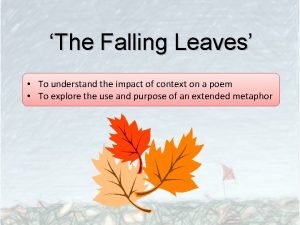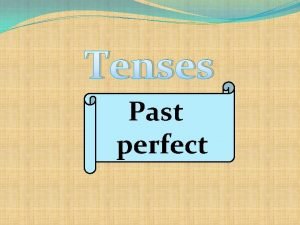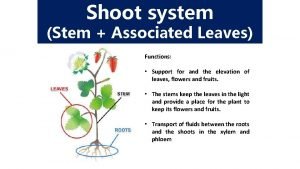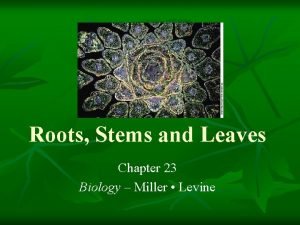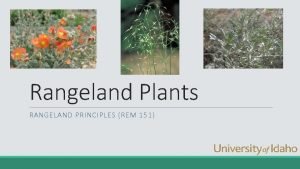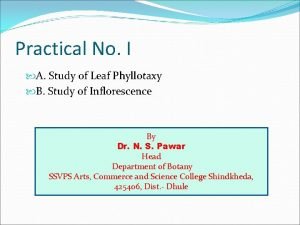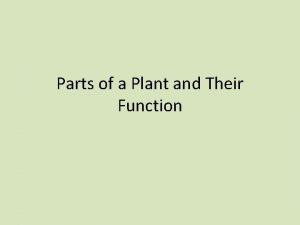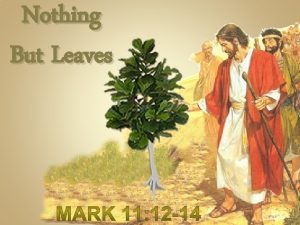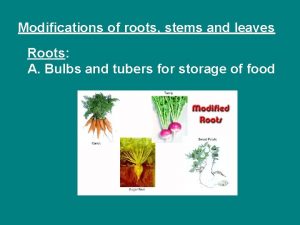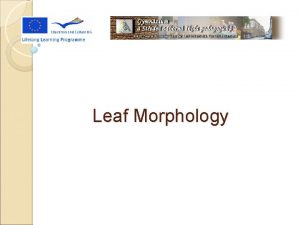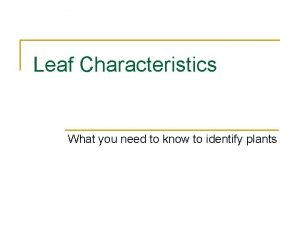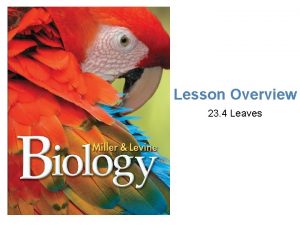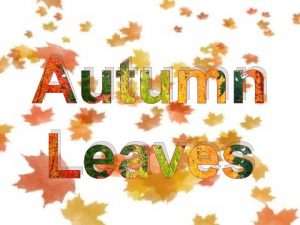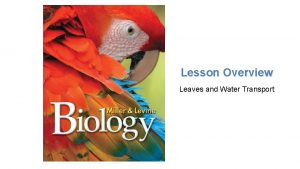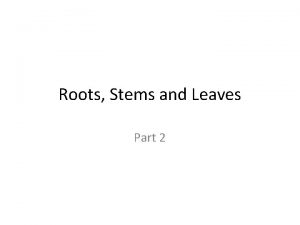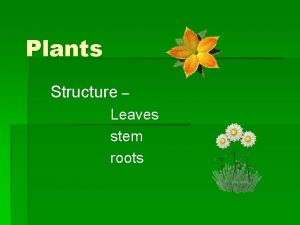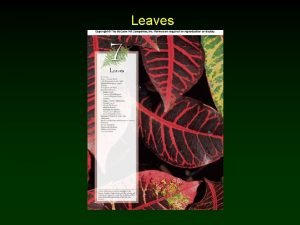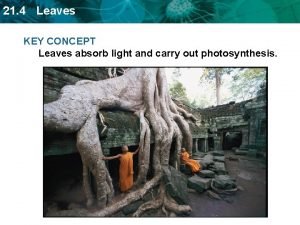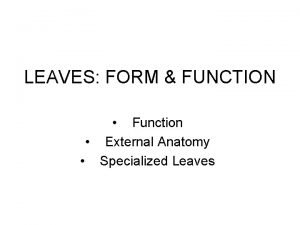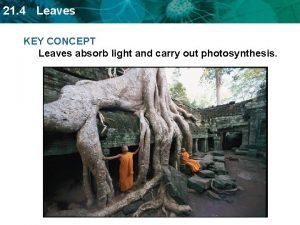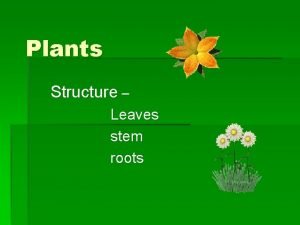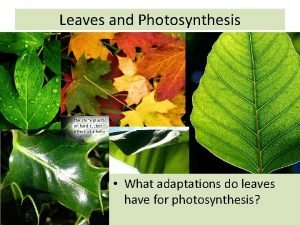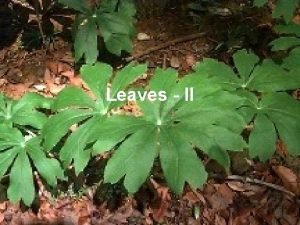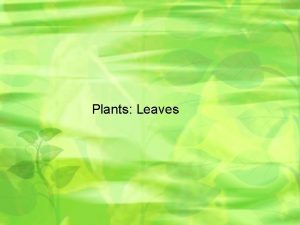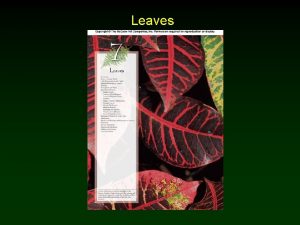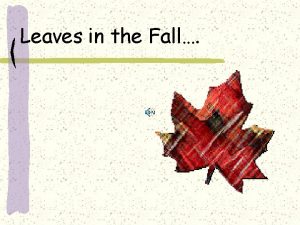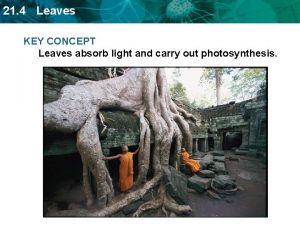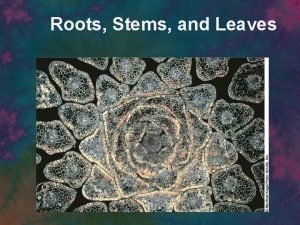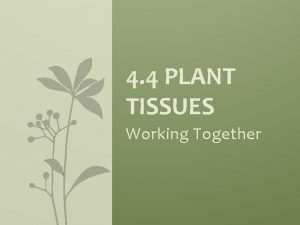Lesson Overview 23 4 Leaves Lesson Overview Leaves
























- Slides: 24

Lesson Overview 23. 4 Leaves

Lesson Overview Leaves THINK ABOUT IT We hear a lot these days about “green industry, ” but did you know that the most important manufacturing sites on Earth are already green? They are the leaves of plants. Using the energy captured in their leaves, plants make the sugars, starches, and oils that feed virtually all land animals, including us.

Lesson Overview Leaves Leaf Structure and Function How is the structure of a leaf adapted to make photosynthesis more efficient?

Lesson Overview Leaves Leaf Structure and Function How is the structure of a leaf adapted to make photosynthesis more efficient? The structure of a leaf is optimized to absorb light and carry out photosynthesis.

Lesson Overview Leaves Anatomy of a Leaf 1. To collect sunlight, most leaves have a thin, flattened part called a blade. The flat shape of a leaf blade maximizes the amount of light it can absorb. 2. The blade is attached to the stem by a thin stalk called a petiole. Leaves have an outer covering of dermal tissue and inner regions of ground and vascular tissues.

Lesson Overview Leaves Dermal Tissue 3. The top and bottom surfaces of a leaf are covered by the epidermis, which has tough, irregularly shaped cells with thick outer walls. The epidermis of nearly all leaves is covered by a waxy cuticle, a waterproof barrier that protects the leaf and limits water loss through evaporation.

Lesson Overview Leaves Vascular Tissue 4. Xylem and phloem tissues are gathered together into bundles called leaf veins that run from the stem throughout the leaf.

Lesson Overview Leaves Photosynthesis 5. Beneath the upper epidermis is a layer of cells called the palisade mesophyll, containing closely packed cells that absorb light that enters the leaf. 6. Beneath that is the spongy mesophyll, which has many air spaces between its cells.

Lesson Overview Leaves Photosynthesis The air spaces in 7. the spongy mesophyll connect with the exterior through stomata, small openings in the epidermis that allow carbon dioxide, water, and oxygen to diffuse into and out of the leaf.

Lesson Overview Leaves Transpiration The walls of mesophyll cells are kept moist so that gases can enter and leave the cells easily. However, 8. water also evaporates from these surfaces and is lost to the atmosphere called Transpiration, is the loss of water through leaves. This lost water may be replaced by water drawn into the leaf through xylem vessels in the vascular tissue.

Lesson Overview Leaves Transpiration helps to cool leaves on hot days, but it may also threaten the leaf’s survival if water is scarce, as seen in this wilting plant.

Lesson Overview Leaves Gas Exchange and Homeostasis What role do stomata play in maintaining homeostasis? Plants maintain homeostasis by keeping their stomata open just enough to allow photosynthesis to take place but not so much that they lose an excessive amount of water.

Lesson Overview Leaves Gas Exchange Leaves take in carbon dioxide and give off oxygen during photosynthesis. When plant cells use the food they make, the cells respire, taking in oxygen and giving off carbon dioxide. 9. Plant leaves allow gas exchange between air spaces in the spongy mesophyll and the exterior by opening their stomata.

Lesson Overview Leaves Homeostasis If stomata were kept open all the time, water loss due to transpiration would be so great that few plants would be able to take in enough water to survive. 10. Plants maintain homeostasis by keeping their stomata open just enough to allow photosynthesis to take place but not so much that they lose an excessive amount of water.

Lesson Overview Leaves Homeostasis 11. Guard cells are highly specialized cells that surround the stomata and control their opening and closing. Guard cells regulate the movement of gases into and out of leaf tissues.

Lesson Overview Leaves Homeostasis Carbon dioxide can enter through the open stomata, and water is lost by transpiration.

Lesson Overview Leaves Homeostasis 12. When water is abundant, it flows into the leaf, raising water pressure in the guard cells, which opens the stomata. The thin outer walls of the guard cells are forced into a curved shape, which pulls the thick inner walls away from one another, opening the stoma.

Lesson Overview Leaves Homeostasis 13. When water is scarce, water pressure within the guard cells decreases, the inner walls pull together, and the stoma closes. This reduces further water loss by limiting transpiration.

Lesson Overview Leaves Homeostasis In general, stomata are open during the daytime, when photosynthesis is active, and closed at night, when open stomata would only lead to water loss. However, stomata may be closed even in bright sunlight under hot, dry conditions in which water conservation is a matter of life and death. Guard cells respond to conditions in the environment, such as wind and temperature, helping to maintain homeostasis within a leaf.

Lesson Overview Leaves Transpiration and Wilting 14. Osmotic pressure keeps a plant’s leaves and stems rigid. High transpiration rates can lead to wilting. Wilting results from the loss of water—and therefore pressure—in a plant’s cells.

Lesson Overview Leaves Adaptations of Leaves 15. The leaves of these plants have adaptations to the dry or lownutrient conditions in which they live. Pitcher Plant: 16. The leaf of a pitcher plant is modified to attract and then digest insects and other small prey. Such plants typically live in nutrient-poor soils and rely on animal prey as their source of nitrogen.

Lesson Overview Leaves Adaptations of Leaves Rock Plant: The 17. two leaves of a rock plant are adapted for hot, dry conditions. They are rounded, which minimizes the exposure of their surface to the air. They also have very few stomata.

Lesson Overview Leaves Adaptations of Leaves Spruce The 18. narrow leaves of a spruce tree contain a waxy epidermis as well as stomata that are sunken below the surface of the leaf. These adaptations reduce water loss from the leaves.

Lesson Overview Leaves Adaptations of Leaves Cactus: 19. Cactus leaves are actually nonphotosynthetic thorns that protect against herbivores. Most of the plant’s photosynthesis is carried out in its stems.
 Chapter 9 lesson 2 photosynthesis an overview
Chapter 9 lesson 2 photosynthesis an overview Lesson overview
Lesson overview Conifer dichotomous key
Conifer dichotomous key Words are like leaves and where they most abound
Words are like leaves and where they most abound Metaphor for leaves
Metaphor for leaves Leave в past simple
Leave в past simple Functions of the shoot system
Functions of the shoot system Chapter 23 roots stems and leaves
Chapter 23 roots stems and leaves Common curly mesquite
Common curly mesquite Proverbs 13:1 niv
Proverbs 13:1 niv Raceme inflorescence
Raceme inflorescence Pictures of animals whose ears cannot be seen
Pictures of animals whose ears cannot be seen The filipino hero featured in the pnp seal is
The filipino hero featured in the pnp seal is 4 parts of plants
4 parts of plants Oedipus rex play review
Oedipus rex play review Nothing but nothing leaves nothing
Nothing but nothing leaves nothing Stem and root modifications
Stem and root modifications Matt monro autumn leaves
Matt monro autumn leaves Leaves function plant
Leaves function plant Leaf arrangement types
Leaf arrangement types Army regulation 600-8-10 paternity leave
Army regulation 600-8-10 paternity leave Parts of leaf
Parts of leaf Leaf arrangement
Leaf arrangement Sprrow
Sprrow Manalang 1982
Manalang 1982




